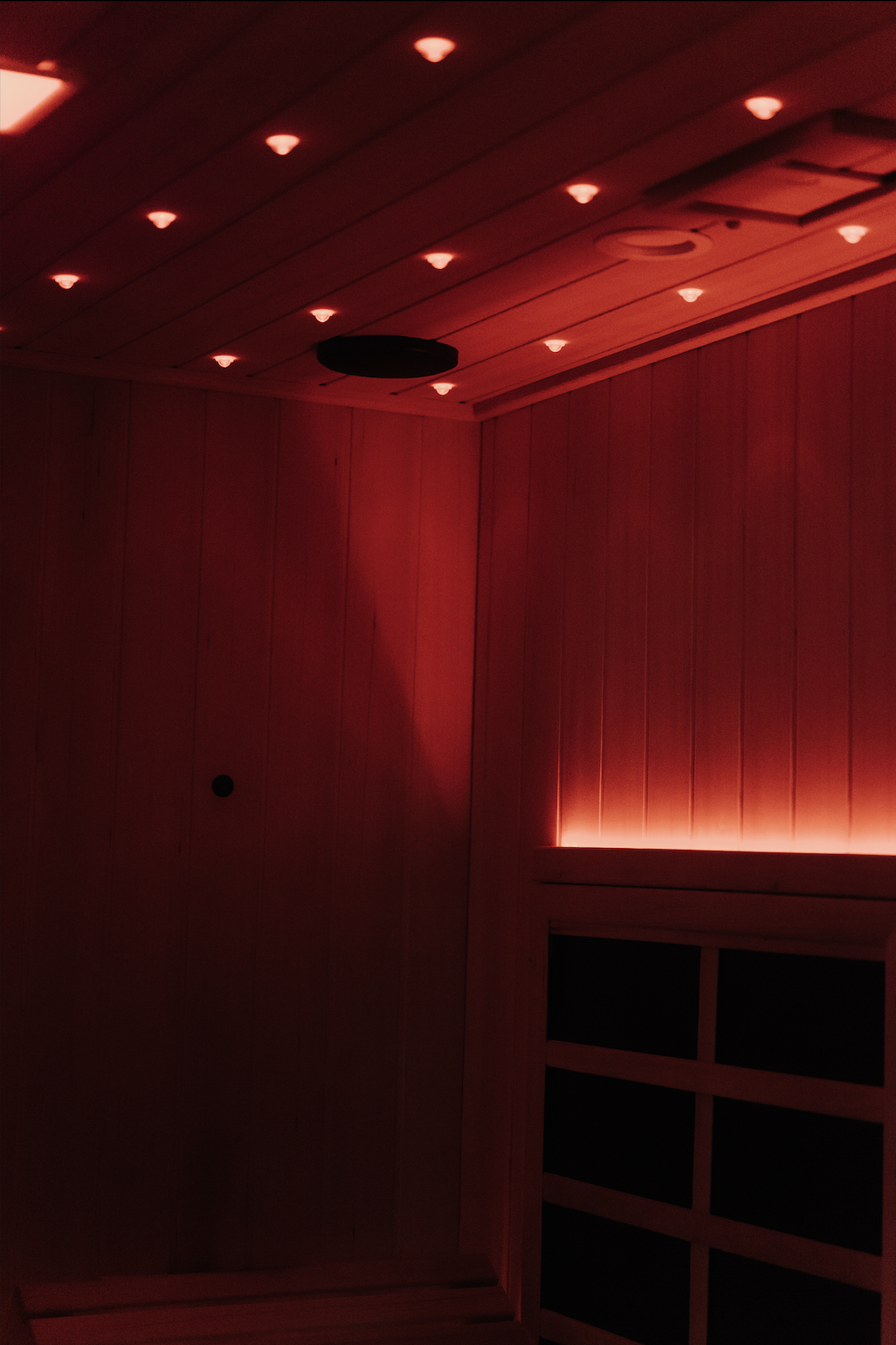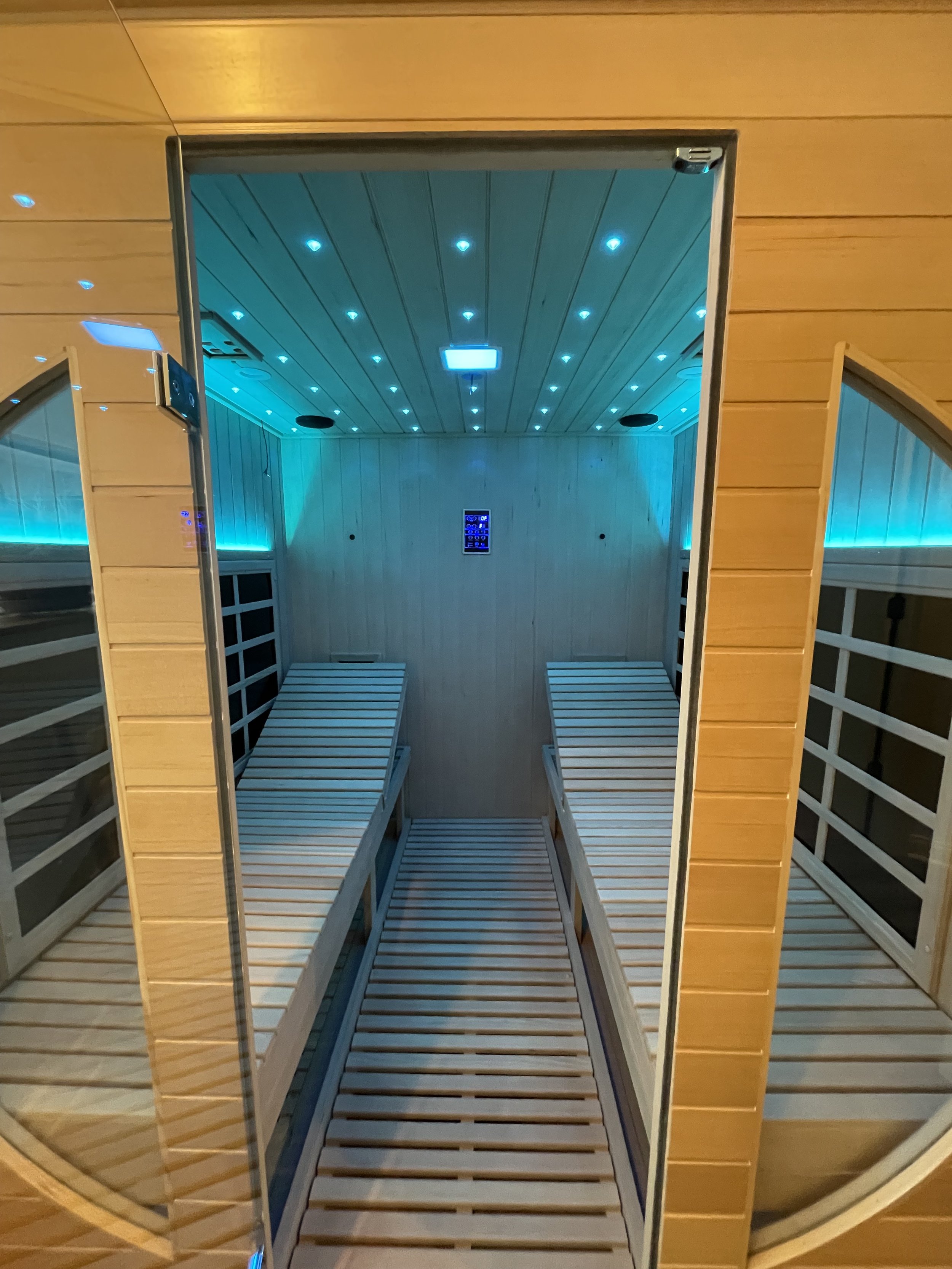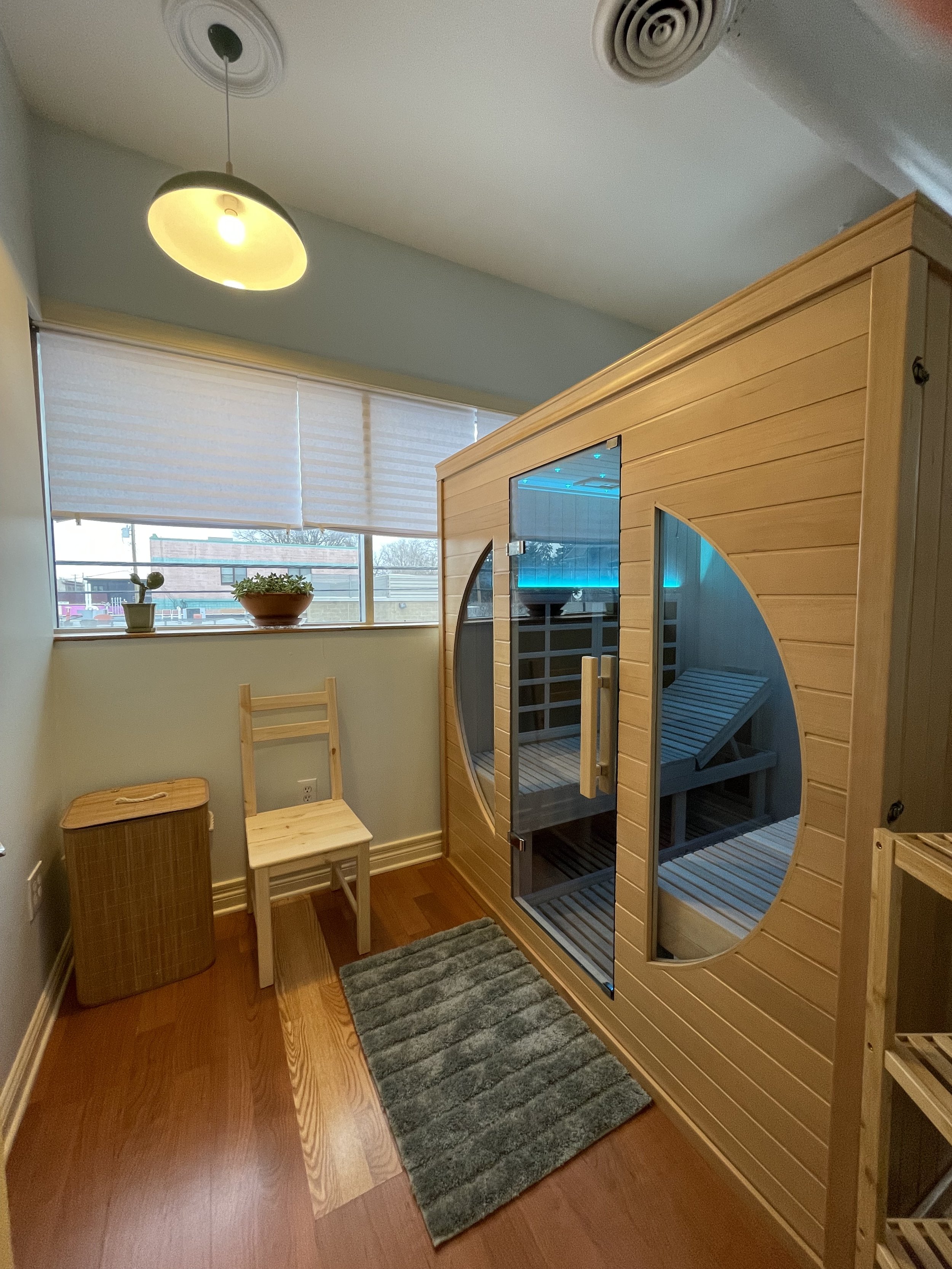
Infrared Sauna
What is an Infrared Sauna?
Infrared saunas have gained immense popularity in recent years as a holistic approach to health and relaxation. Unlike traditional saunas, which use steam and high temperatures, infrared saunas rely on infrared radiation to generate heat, offering a unique and therapeutic experience.
Infrared saunas differ from more traditional saunas- they use infrared light to heat the body directly instead of heating the air. Therefore, infrared saunas operate at lower temperatures (110-140 degrees Fahrenheit) than traditional saunas (150-190 degrees Fahrenheit) while still providing the same benefits.

Infrared saunas utilize infrared radiation to directly heat the body, rather than heating the surrounding air.
This radiation is divided into three categories:
-
This type of radiation has a shorter wavelength and is primarily absorbed by the skin's surface. NIR is known for promoting skin health and cellular repair.
-
MIR radiation penetrates deeper into the body, targeting tissues and muscles. It aids in pain relief, improved circulation, and muscle recovery.
-
FIR radiation is the most penetrating and can reach the body's core. It is responsible for inducing profuse sweating and detoxification.
Health Benefits of Infrared Saunas
Detoxification
Sweating is the body's natural way of eliminating toxins. Infrared saunas promote deep sweating, which can help rid the body of heavy metals, chemicals, and other harmful substances.
Stress Reduction
Infrared saunas promote relaxation by reducing stress hormones like cortisol. Regular use can improve sleep and enhance overall well-being.
Pain Relief
The heat from infrared saunas relaxes muscles and promotes blood flow, providing relief from chronic pain conditions such as arthritis, fibromyalgia, and muscle soreness.
Skin Health
NIR radiation can rejuvenate the skin, reducing wrinkles, improving elasticity, and promoting a healthy complexion.
Improved Circulation
The infrared heat causes blood vessels to dilate, improving circulation. This can be beneficial for cardiovascular health and may help reduce blood pressure.
Weight Management
While not a standalone weight loss solution, infrared saunas can support weight management by increasing heart rate and calorie expenditure during a session.

Scientific Evidence
Numerous studies support the therapeutic benefits of infrared saunas. Research has shown that regular use can improve endothelial function, reduce oxidative stress, and enhance vascular health. Additionally, clinical trials have demonstrated the effectiveness of infrared saunas in pain management for conditions like osteoarthritis.
Considerations for your Safety
Hydration
It's crucial to stay well-hydrated during and after an infrared sauna session to replace fluids lost through sweating.
Duration and Temperature
Sessions typically last between 20 to 45 minutes at temperatures ranging from 100°F to 150°F (37°C to 65°C). Beginners should start with shorter sessions at lower temperatures and gradually increase as they become accustomed to the heat.
Medical Conditions
Individuals with certain medical conditions, such as cardiovascular issues or skin conditions, should consult a healthcare professional before using an infrared sauna.
Pregnancy
Pregnant individuals should avoid prolonged exposure to high temperatures in saunas, as it may pose risks to the developing fetus.
Substance Use
It is not safe to use an infrared sauna if you are currently under the influence of alcohol or otherwise intoxicated.
You will have access to a private room with an infrared sauna that can fit up to 4 people. Each additional person added is $10. You have access to the room for 60 minutes and can take breaks from the head as needed. Saunas can be customized with light therapy and can connect via auxiliary cable to your own device so you can listen to audio of your choice.
We ask that you sit on a towel while using the sauna, you can bring your own or we offer a towel rental service.
About Sauna Sessions
Conclusion
Infrared saunas offer a rejuvenating and therapeutic experience that extends beyond relaxation. With their potential to aid in detoxification, pain relief, improved circulation, and stress reduction, these saunas have found a place in the wellness routines of many individuals seeking holistic health solutions. However, it's essential to approach infrared sauna use with mindfulness, taking into consideration personal health factors and recommendations for safe and effective sessions. When used responsibly, infrared saunas can be a valuable addition to a holistic approach to well-being and self-care.


